With so many companies building fishing reels, all of which have their own models, size charts, and fancy lingo for the newest and most hi-tech features, it’s no wonder why you could spend hours staring at the big glass display case in your favorite tackle store pondering. Before diving into what the best size and type of reel for your style of fishing is, let's cover the basic categories and dissect what the different specs mean.

Types of Fishing Reels
There are two main types of reels including those with fixed spools and those with revolving spools, which can be further broken down into four types. Fixed spool reels include spincast and spinning (which take up line by laying it on the spool), and revolving spool reels include baitcasting and conventional reels (which take up line by turning the spool itself). All four perform the same basic function and contain some variation of a frame which houses the gears and bearings, a spool which holds and releases line, and a handle you turn to bring the line back in. While personal preference plays a part in choosing which type of reel to go with, each has their pros and cons.
Spincast Reels
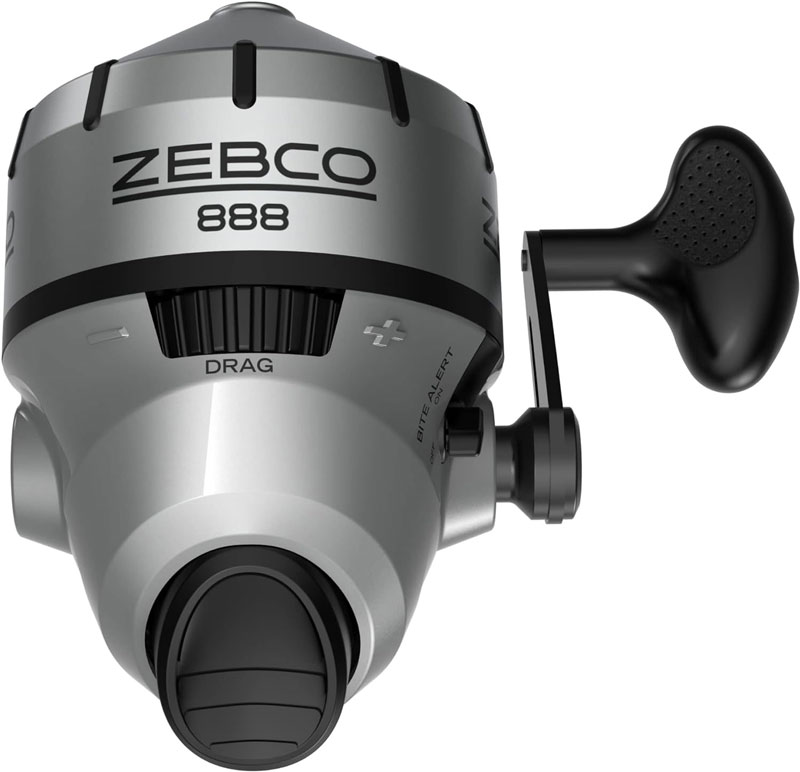
Many anglers start out with a good ol’ spincast reel and that’s for good reason. They are inexpensive and thanks to the push-button casting, very easy to use. In addition to castability and a short learning curve, the cover on the spool prevents wind knots and tangles. However, most lack quality drags and have relatively low line capacity.
Spinning Reels
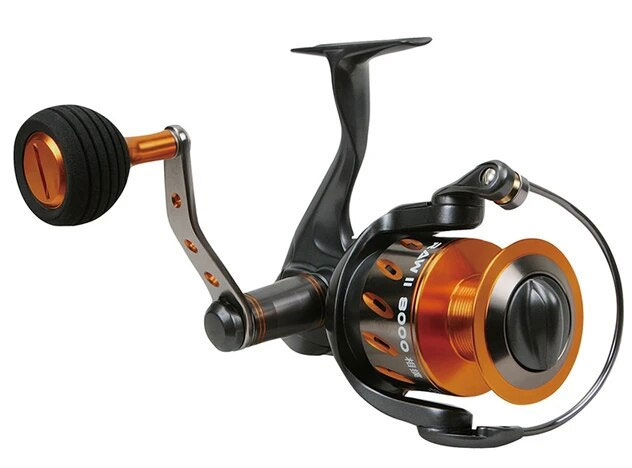
One of the most popular and versatile options, spinning reels are utilized by anglers of all levels. Spinning reels boast high line capacity and they are also easy to cast with their flip-back bail. There are lots of good reels at the lower price points but there are also plenty of great high-end options for those looking to step up their game. The downside is that you can get line twist and wind knots.
Baitcasting Reels

While baitcasters have a steeper learning curve, there are certain types of fishing where they excel. When tuned properly, baitcasters deliver the most accurate casting possible. Another benefit to using a baitcasting reel is the ability to maintain pressure on the spool with your thumb while letting out line to prevent missing bites on the drop. The biggest drawback is the possibility of getting a “bird’s nest” tangle when casting if the spool begins to spin faster than your lure takes out line. However, once you learn how to use and tune them, preventing this with proper adjustment and a bit of pressure from your thumb on the spool becomes second nature.
Conventional Reels
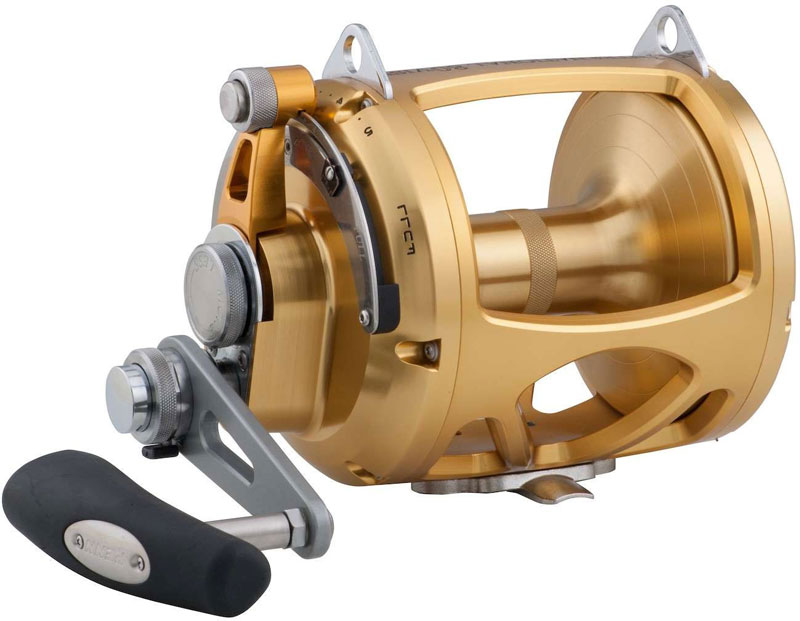
Used for bottom fishing and trolling, conventional reels come in a wide range of sizes for targeting everything from panfish to pelagics. Though many can be cast, most are designed for tactics where line is dropped or let out for trolling. It’s important to know that in some cases the lines get blurred between baitcasting and conventional reels, and there’s no dictionary definition separating the two. When you see the term “low-profile baitcaster” you know the reel is intended for casting, but these can also be used for bottom fishing or trolling and it’s not improper to refer to them as conventional reels since they have revolving spools. Lastly, some conventional reels are level-winding. This means that they have a level-wind mechanism that goes from side to side on a worm gear, to ensure the line lays evenly on the spool rather than bunching up in one place. Without this the line must be directed onto the spool with your thumb to keep it evenly laid on from side to side. However, level winders can’t take the heat of large offshore pelagics that can rip hundreds of feet of line from a reel in a run, and are generally reserved for inshore or freshwater use.
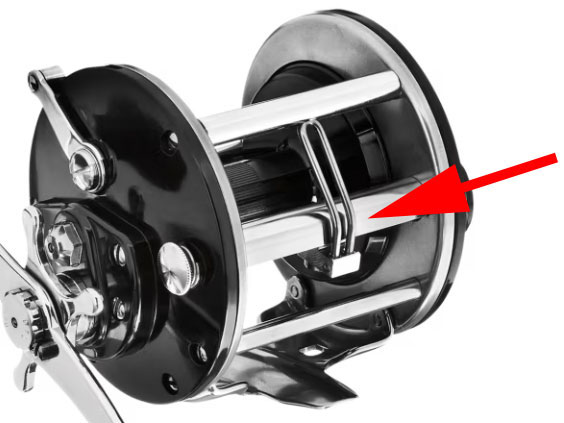
Fishing Reel Specifications
The basic specs you’ll commonly see for all these types of reels are size, gear ratio, drag, line capacity, ball bearings, and weight. As for size, spincast reels are generally small and intended for freshwater or light-duty saltwater fishing with model number sizing differing by manufacturer, but larger numbers indicate larger size reels. Spinning reels are all offered in sizes by the thousand with most companies providing half-sizes such as 1000 and 1500. Often the main difference in half-sizes is having a larger spool. A 500 or 1000 size reel is the smallest with a 20000 being the largest. Most freshwater spinning reels come in 1000 to 4000 sizes, saltwater inshore reels typically span from 1000 to 6000, and most offshore reels range from 5000 to 10000 with a few going all the way to 30000. Low-profile baitcasters are sized by the hundred and range from 50 to 500.
Since they span everything from tiny panfish reels to giant offshore reels conventionals are a bit more complicated and vary greatly amongst brands and models. But they still follow the basic model of larger numbers being larger reels. Particularly large offshore models may be offered with multiple drag options, speeds, and widths. Conventional reels come in star- or lever-drag models, with lever drags generally considered superior for big-game fishing since they allow for one-finger drag adjustments during the battle. Another unusual component of offshore conventional reels is gearing; some are offered in two-speed models, which means you can switch between a high and low gear ratio much like when riding a bike. Some reels will also have an “N” or “W” in the model name notating a narrow spool or a wide spool. Narrow spools are often offered to make them lighter and allow for easily and evenly laying line on the spool. Wide spools are typically found on larger trolling reels and increase line capacity.
The gear ratio deals with speed and indicates retrieval rate of the reel. The gear ratio will be written as a ratio which indicates how many times the spool or bail rotates per turn of the handle. For instance, a 6.3:1 means that for every turn of the handle the spool or bail rotates 6.3 times. A low gear ratio reel will have a slower retrieval rate and a high gear ratio reel will have a faster retrieve.
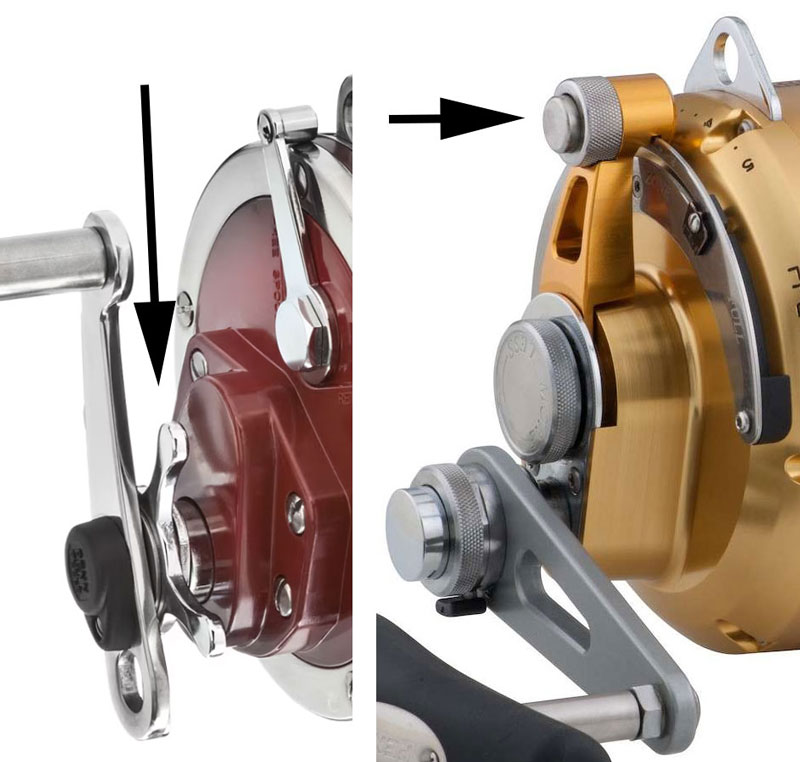
Drag is a crucial element of a fishing reel, it’s the mechanism that determines the resistance put out by the reel when fighting a fish. Drag is measured in pounds and the “max drag” signifies the maximum number of pounds of resistance the reel has when the rag is locked down all the way. All spincast and spinning reels have the same drag concept, a knob or dial, usually (though not always) on the top of the spool, which is turned to tighten or loosen the drag. Some spinning reels have a live line drag system which is made up of two separate drag knobs, which allows you to set a loose drag setting for when the fish picks up your bait and a tight drag for when the fight begins. Most low-profile casting reels have a star drag system controlled by turning a star-shaped wheel which is located between the handle and the main frame of the spool. As mentioned above there are multiple types of drag systems for conventional reels including star and lever drag.
Next is line capacity. Most reels have a small list on the spool showing the recommended line size and how much of each size you can fit. Pound-test is the first number which is either displayed as a number and (or) line diameter, followed by capacity which is measured in yards. The list will specify whether it is referring to braid or mono since braid has a much thinner diameter than mono relative to strength.
How smooth a reel is comes down to quantity and quality of the ball bearings. However, not all ball bearings are created equal. There is a correlation between price and the quality of the ball bearings. Many cheap reels contain lots of ball bearings and feel super smooth at first, but don’t last very long. Quality over quantity is the name of the game. There are three types of ball bearings: open, shielded, and sealed. Sealed are the best and provide the most corrosion resistance, shielded offer some protection against corrosion but will not last as long as sealed, and lastly open bearings which will corrode and junk out the fastest. Reels with open bearings are best suited for freshwater and still won’t last as long as shielded or sealed bearings, especially when used in brackish waters of the Bay.
The weight of a reel is generally listed in ounces. There are many different materials and alloys that reels are made of, and modern reels have become extremely light. If you intend on primarily fishing with lures look for a lighter reel that won’t cause as much fatigue from casting all day. Heavier reels are best suited for casting bait and letting it sit, or for trolling. Reels at the higher price points will often weigh significantly less than midrange reels made with less advanced alloys. Very inexpensive reels may be light, but their plastic parts won’t last long.
Which Fishing Reel is Best for You?
First you have to decide what your primary use for the reel will be. Ask yourself what species you’ll target, if you’ll cast or troll, use bait or lures, and if you’ll be fishing from land or a boat, in freshwater or saltwater. Remember that it’s fine to use saltwater reels in freshwater venues, but not the other way around.
Also be realistic about your current skill level. Beginners who will be casting should probably start with a fixed-spool reel to minimize frustration, and begin practicing with a baitcaster when they want to improve accuracy. Inshore trollers will benefit from those level-winders. When you’re first getting started it’s usually best to accept the limitations of a reel that will make fishing easier and worry about advancing capabilities after you have some experience. Once you have narrowed it down you can begin to explore the options within your budget.
-By Ian Rubin